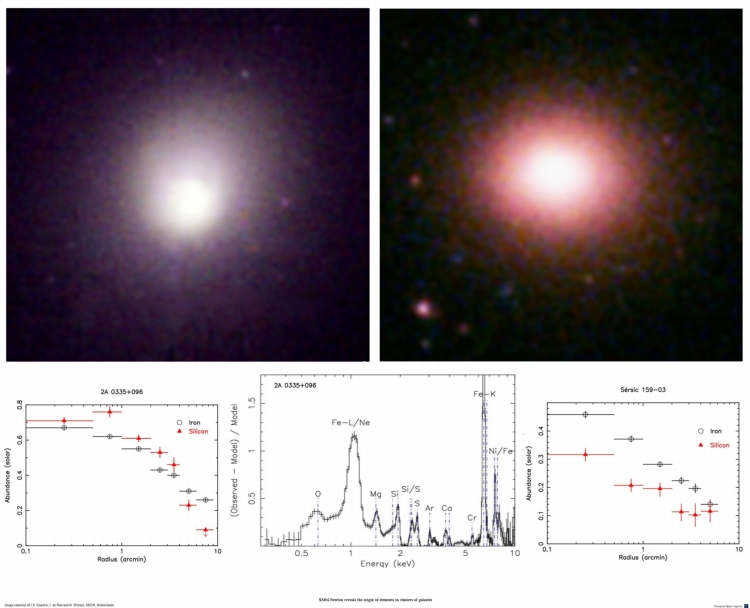
 Credit:Image courtesy of J.S. Kaastra, J. de Plaa and N. Werner, SRON, Netherlands and ESA
Credit:Image courtesy of J.S. Kaastra, J. de Plaa and N. Werner, SRON, Netherlands and ESA
Abundance
Matter more complex than hydrogen and helium must have been cooked up inside stars - or maybe cooked up by stellar supernovae. But it's a mystery how these complicated chemicals came to pollute our Universe - what type of supernovae produced them, and how did such elements get distributed throughout the Universe. X-ray spectroscopy has helped refine our understanding of this fundamental question, by allowing astronomers to probe the makeup of the hot gas bound within clusters of galaxies. Such hot cluster gas represents the sum total of the historical production of complex elements by the supernovae of all the member galaxies in the cluster. The X-ray data shown above on two galaxy clusters was obtained by the XMM-Newton X-ray telescope. In the images shown above, the individual member galaxies can't be seen; instead, the X-ray emission is dominated by the million degree intercluster gas. The plots below the images on the left and right show the distribution of iron and silicon from the center of the cluster, while the center plot shows the emission from different elements from the hot gas of one of the clusters. The radial distributions of these elements are very different for the two clusters, suggesting that the evolution of the two clusters was very different.
<
HEA Dictionary ● Archive
● Search HEAPOW
● Other Languages
● HEAPOW on Facebook
● Download all Images
● Education ● HEAD
>
Each week the HEASARC
brings you new, exciting and beautiful images from X-ray and Gamma ray
astronomy. Check back each week and be sure to check out the HEAPOW archive!
Page Author: Dr. Michael F. Corcoran
Last modified Monday, 26-Feb-2024 17:34:38 EST


